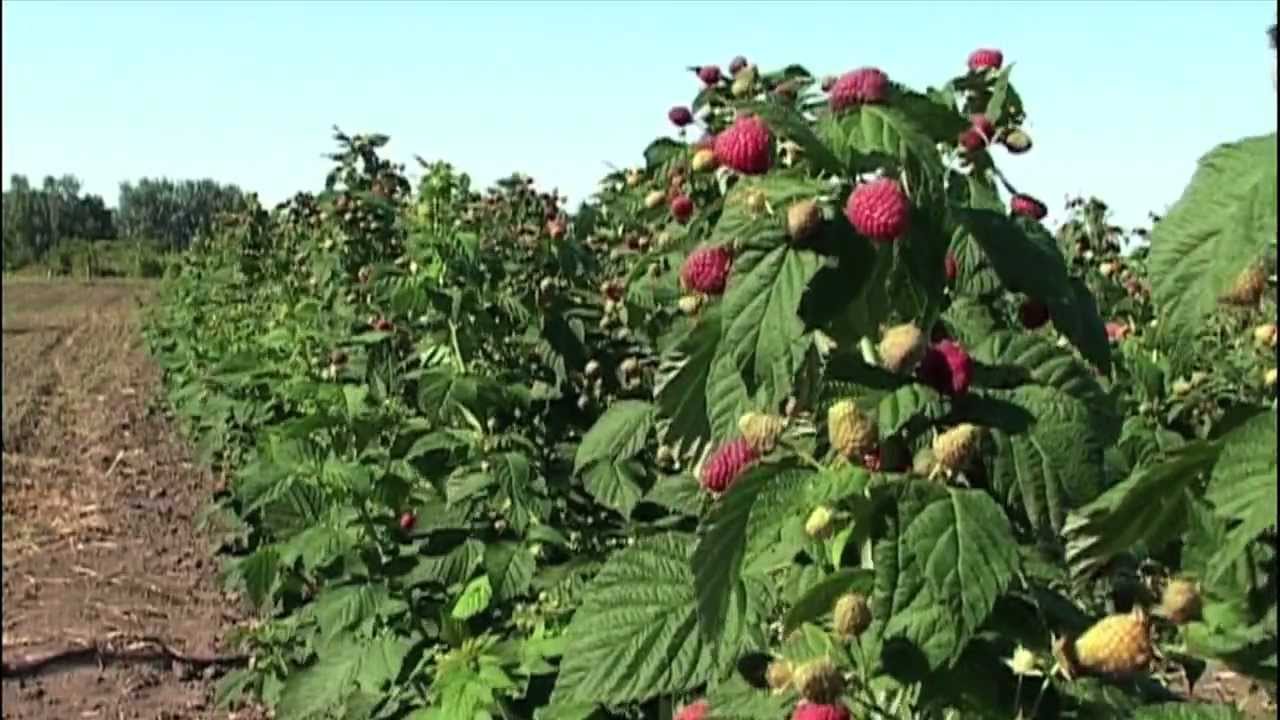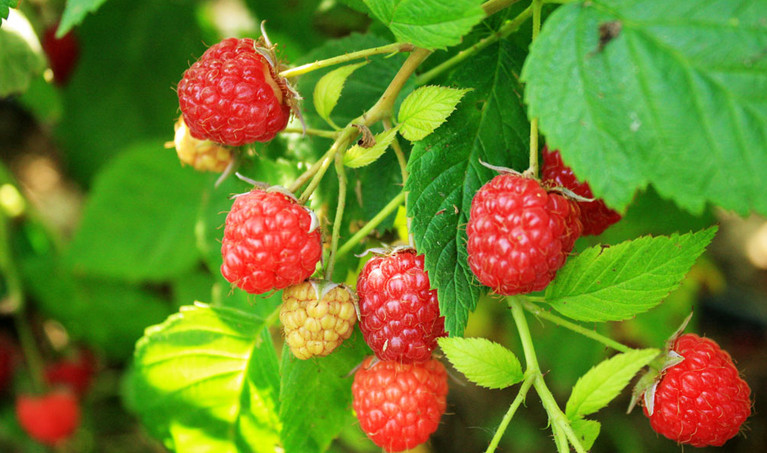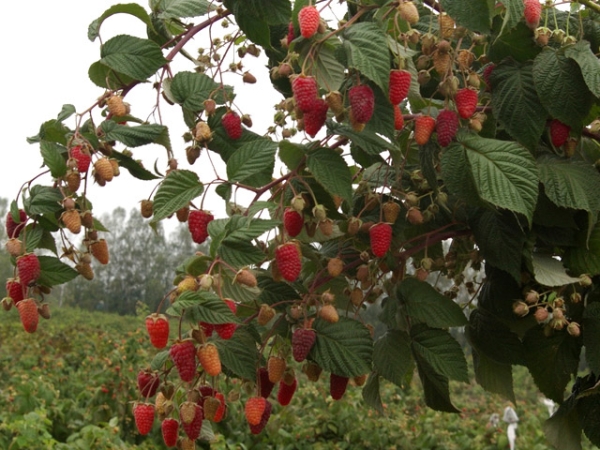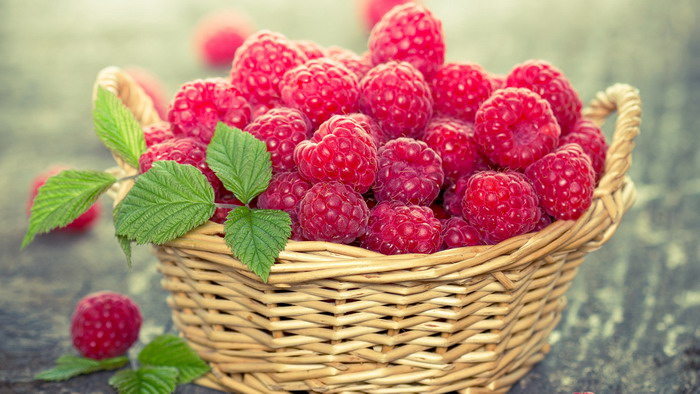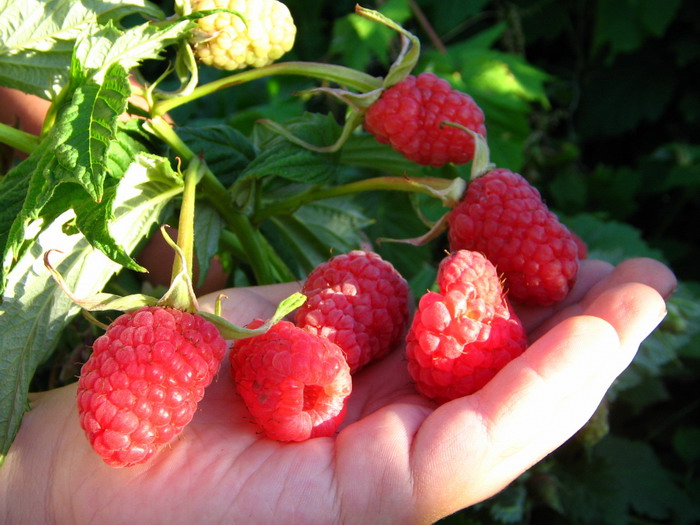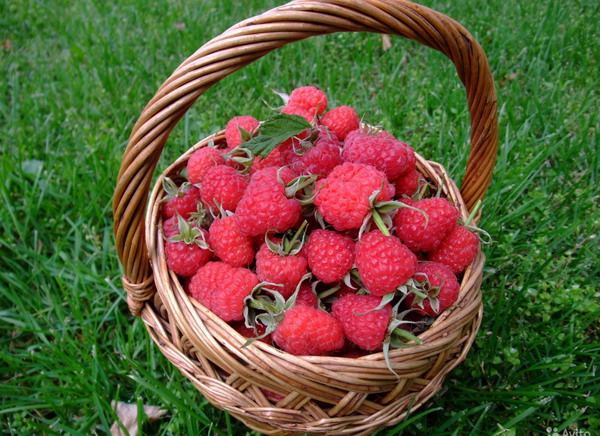Content:
Perhaps the most exotic blackberry / raspberry crossing is the Cumberland. The homeland of this variety is America. The age is more than a hundred years old, but in Russia the black raspberry Cumberland is practically not common. A distinctive feature is the color of the berry - bright black. The yellow variety is no less interesting. Raspberry Cumberland has a specific taste, a bit like blackberries: sweet with sourness, quite aromatic.
Description of the variety
During the ripening period, the fruits gradually turn from bright red into dense dark purple, then into black berries. The bush is strewn with bunches of dark berries, the fruits are round, of medium size, the average weight of the berries is 2 g. This variety reaches the maximum degree of fruiting by three years, from one bush you can get 4-6 kg of berries per season.
The properties of raspberries include the fact that this variety tolerates transportation well over long distances - even overripe berries remain quite firm and do not blur. Productivity is high.
In addition, tall bushes of this variety can serve as a decoration for a garden; the plant has the peculiarity of growing up to 2.5 meters and bending, forming an interesting bright green arch. Shoots of young plants are green with a touch of lilac or bluish shades.

Arch made of Cumberland raspberries by forming the top
The characteristic is that the Cumberland variety is quite frost-resistant and hardy, not afraid of the first frosts and low temperatures. It takes root well in cold climates and withstands dry weather. It is noted that this variety of raspberries prefers loamy soils. Resistant to various types of diseases, berries are rarely worms. Cumberland black raspberries are harvested in July-August, flowering begins in June and lasts the whole month, when the threat of frost disappears.
Raspberry yellow Cumberland
A peculiarity of yellow raspberries is its specific taste: it is much sweeter than red or black varieties. Therefore, this variety can rightfully be considered a favorite dessert of children, and lovers of raspberry jam will also like it. The yellow raspberry variety is suitable for allergy sufferers, since it does not contain anthocyte substances that can cause allergic reactions; it will also be useful for pregnant women. Berries of yellow raspberries are rich in vitamin B9 and folic acid, which takes part in hematopoiesis and improves metabolism.
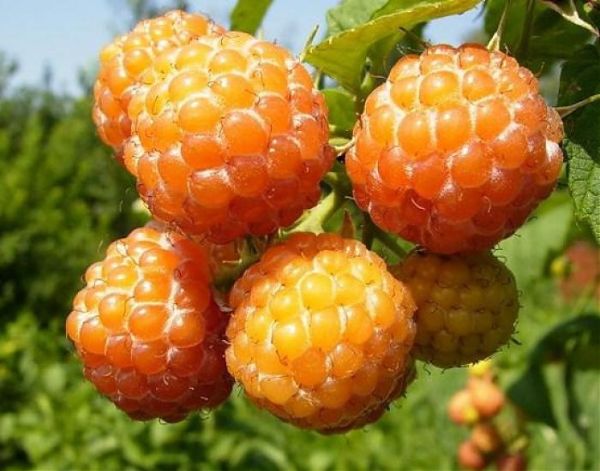
Raspberry yellow-fruited varieties "Cumberland"
Reproduction of raspberries
Consider what constitutes a black raspberry Cumberland description of planting care.
There are several ways to breed this raspberry variety:
- propagation by cuttings;
- rooting of the tops;
- rooting by horizontal shoots;
- propagation by seeds;
To obtain a large number of seedlings, the shoots rooting method is used. In spring, the shoots on the bush are cut to a height of 10-20 cm. Over the summer, the bushes strengthen, grow and turn into full-fledged young shoots, which are subsequently pressed to the ground and covered with a layer of soil, leaving several upper buds on the surface. By the beginning of the next summer season, full-fledged young raspberry bushes are obtained from the shoots, which can then be transplanted to the chosen place.
Reproduction by rooting the crown is used less often, but no less effective for this variety. To do this, a layer of humus or peat 10-15 cm is poured under the bush, the raspberry bush is bent to the ground and sprinkled, soon adventitious roots appear from the top. It is noticed that this procedure is best carried out closer to autumn.
By cuttings, this variety reproduces best during the period of active rooting of the plant. Before planting, a greenhouse is prepared, the soil in which consists of a fertile layer of earth and river sand, poured on top with a layer of 7-10 cm.After that, the cuttings are planted in a greenhouse to a depth of 3-5 cm at a distance of 10 cm.
Seed propagation is carried out immediately after collecting seeds; for this, beds with nutritious loose soil are prepared. The seeds are buried at a distance of 1.5-2 cm and sprinkled with a layer of soil, then sawdust and peat.
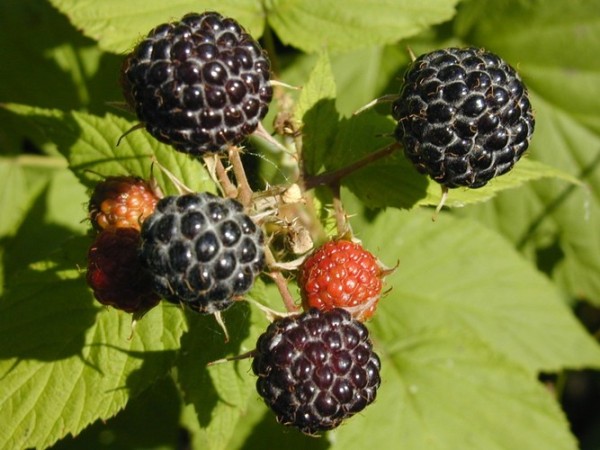
Raspberry variety "Cumberland"
Favorable growing conditions
Loam is considered a favorable soil for planting Cumberland raspberries, as well as open fertile soils in sunny areas. It is categorically not worth planting this variety in wetlands, as well as on soils where nightshade crops were predecessors.
For seedlings, pits are prepared, 0.5 meters deep, a layer of wood ash mixed with humus is poured onto the bottom of the pit. Seedlings must be planted at a distance of 60-70 cm from each other, the rows should not be less than 1.5-2 meters, this method provides good air circulation, free access to the raspberry tree, penetration of sunlight for fruit ripening.
Note! When planting, the roots of the plant must be evenly distributed around the perimeter of the pit and watered abundantly with water, if all conditions are met, the seedlings usually quickly take root and grow.
A few days after planting, it is necessary to install trellis supports for the seedlings. This device allows not only to form a bush, giving it a "convenient" for harvesting look, but also to avoid all sorts of injuries that can be obtained from sharp thorns on the bushes.
Care features
Caring for the bushes of this variety consists in feeding: two or three soil fertilizers are needed for the entire season. The first time it is fertilized during the swelling of the buds, then at the time of bud ovary, after feeding is done in late autumn, before frost. The main care also consists in loosening the soil, abundant watering during the first year of planting.
Additional Information. You can water raspberries with infusion of weeds. The infusion is diluted with water in a ratio of 1:10.
In the second year, pruning is required, which is carried out in several stages, starting in June. Long shoots are cut off, thereby allowing the plant to grow to the sides.
The second pruning is to destroy last year's shoots that have already borne fruit. Young bushes are shortened by half a meter from the ground, leaving 10-15 shoots on each.
Preparing for winter
This variety easily tolerates frosts, but in case of severe frosts, it will be useful to do some manipulations. So, the bushes are bent to the soil with metal staples. You should not cover the raspberries, but in case of a winter with little snow, you can sprinkle the bushes with an additional layer of snow. In the spring, the staples are removed and dried branches are cut.
Important! Also, without fail, the raspberry variety Cumberland requires autumn pruning, this will protect the stems of the plant from icing and freezing.
With these tips for caring for Cumberland raspberries, you can easily achieve a bountiful harvest.
